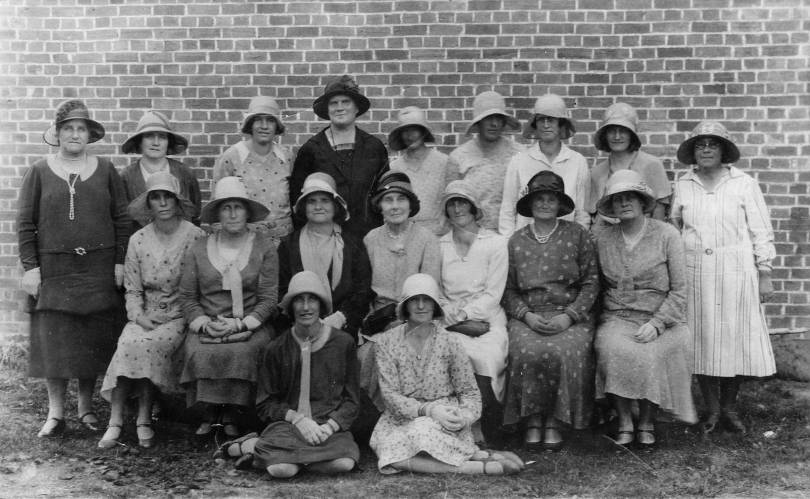
Former Gunning Shire Council Mayor John Shaw with the original flyer for Gunning’s centenary in 1921. Photo: Supplied.
Gunning is the sort of place struggling rural villages could well learn from.
It has new businesses opening regularly, its population is on the rise, and despite what everyone said in 1993, diverting traffic from the main street to the highway did not herald its death knell.
Rather, it seems to have given the Southern Tablelands town a new lease on life – a life that next year will mark the bicentenary of European settlement in the region.
Traditional owners of the land were the Pajong ‘Fish River Tribe’. Today, Gunning and district is mapped as Ngunnawal land.
The village also played an important role in Australia’s colonial history. Records from the Gunning and District Historical Society state that until 1820, Gunning was “at the limit of settlement”.
The government of the day banned settlers from acquiring country outside the 19 counties that centred on Sydney.
“The Lachlan River, near Gunning, was the local boundary and Gunning was the crossing over the swamp that ran into the Lachlan for all land transport, horses, sheep and bullock carts daring to leave ‘civilisation’,” says Ngunnawal elder and custodian Wally Bell.
That swamp is now known as Meadow Creek.
“Meadow Creek was on a pathway from Yass to Lake George and the coast,” says Wally. “It was close to neighbouring Wiradjuri, Gundungarran and Yuin people.”
The bicentenary celebrations were originally scheduled for this year, but COVID-19 forced their delay, with events now scheduled to be held on the weekend of 5-6 March, 2022.
The chair of bicentenary committee Gunning 200, John Shaw, describes Gunning as “going gangbusters”. If anyone knows the village, he should.

Gunning residents in the 1920s. Photo: Gunning and District Historical Society.
A true local, John was born in Gunning and served his community as Mayor of the (former) Gunning Shire Council in 1998 to 1999, and as Upper Lachlan Shire Council Mayor from 2007 to 2016.
“I’ve always been one for steady progress,” he says. “I think that’s what has worked in Gunning. We’ve welcomed in new people, they bring more money to the town, which creates more opportunities for new services and shops.
“It’s the lifestyle of the place that I suppose has kept me here. The fact it has such easy access to Canberra, Goulburn and Yass, yet it is still a sanctuary for people who enjoy the rural lifestyle.
“The town is expanding, and the population is a little different these days. In the city, people don’t mind driving for 30 minutes to get to work, and it’s the same out here.
“The only difference is when people come out here and expect, say, kerb and guttering everywhere, but it doesn’t work that way in country towns.”
John has put the call out for former residents and friends of Gunning to take part in the bicentenary celebrations in March 2022.
“We’d love to see lots of people with connections to the place come back,” he says.
“There are still a lot of old families here on the land, working on farms passed down over the years. With farming in a place like this, the apple doesn’t fall far from the tree.”

An Ernest Mason image of Warrataw Street in Gunning from 1905. Photo: Gunning and District Historical Society.
Gunning and District Historical Society president Leslie Bush says plans are already well underway for the March bicentenary event.
Gunning’s history will be on display throughout the village, including at Pye Cottage Museum, the original slab hut in the main street and the old jail cell, which hasn’t been opened to the public since it was last used in 1979.
Leslie says it is important for a village so steeped in history to honour the people who came before its current residents.
“I’ve always been the person to say that you don’t know where you’re going if you don’t know where you’ve been,” she says.
“Everything that’s happened in Gunning’s past all helps make the place what it is today. It’s important to honour that.”
Leslie is encouraging people with a link to Gunning’s past to be part of the bicentenary by either visiting the village on the weekend of 5-6 March, 2022, or sharing their memories with Gunning and District Historical Society via email at [email protected], or by following the Gunning and District Historical Society blog.









